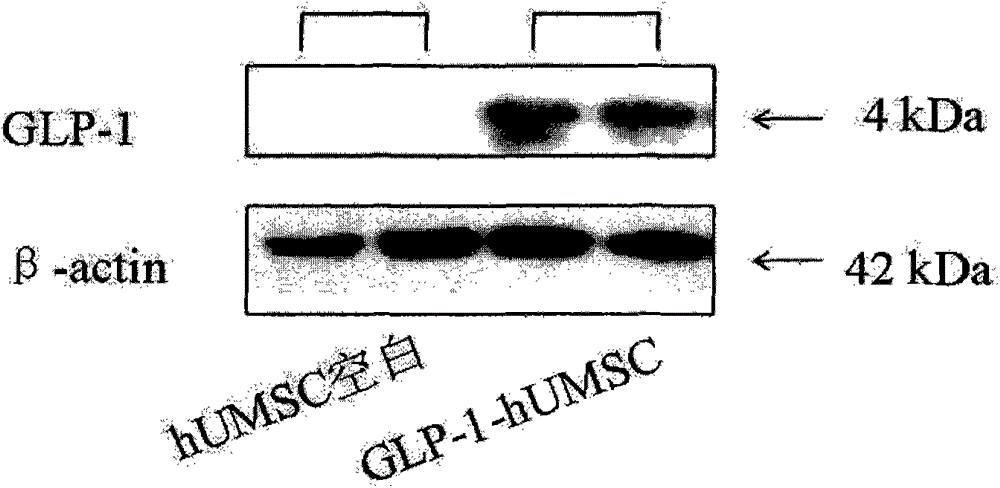Human umbilical cord-derived mesenchymal stem cell strain stably expressing exogenous GLP-1 gene
A GLP-1, stem cell technology, applied in the direction of cells modified by introducing foreign genetic material, genetic engineering, plant genetic improvement, etc., can solve the problem of long-term continuous effect, short plasma half-life, and limited clinical application of GLP-1 And other issues
- Summary
- Abstract
- Description
- Claims
- Application Information
AI Technical Summary
Problems solved by technology
Method used
Image
Examples
Embodiment 1
[0022] Embodiment one, see figure 1 Shown:
[0023] A method for preparing a human umbilical cord-derived mesenchymal stem cell line stably expressing an exogenous GLP-1 gene, comprising the steps of:
[0024] (1) Isolation and culture of human umbilical cord-derived mesenchymal stem cells: human umbilical cord tissue from normal delivery was collected and separated aseptically, and the umbilical cord tissue was cut into 1cm 3 Add the a-MEM culture solution containing FGFb at a final concentration of 20ng / ml to the tissue block, at 37°C, 5% CO 2 Cultivate in an incubator. After 3 days, human umbilical cord-derived mesenchymal stem cells crawl out from the umbilical cord tissue. When the cells reach 80% fusion rate, collect the cells and set aside;
[0025] (2) Construction of pCDNA3.1-GLP-1 eukaryotic expression vector: select the coding gene part in the sequence according to the GLP-1 sequence information provided on GeneBank, use the Overlap-PCR method to obtain the full l...
PUM
 Login to View More
Login to View More Abstract
Description
Claims
Application Information
 Login to View More
Login to View More - R&D
- Intellectual Property
- Life Sciences
- Materials
- Tech Scout
- Unparalleled Data Quality
- Higher Quality Content
- 60% Fewer Hallucinations
Browse by: Latest US Patents, China's latest patents, Technical Efficacy Thesaurus, Application Domain, Technology Topic, Popular Technical Reports.
© 2025 PatSnap. All rights reserved.Legal|Privacy policy|Modern Slavery Act Transparency Statement|Sitemap|About US| Contact US: help@patsnap.com

